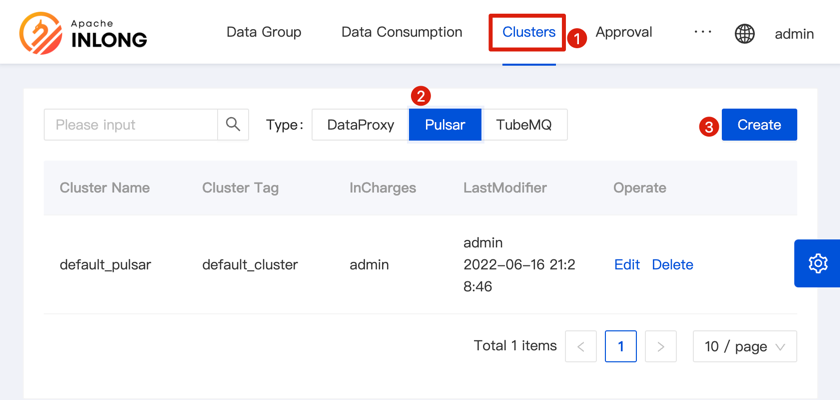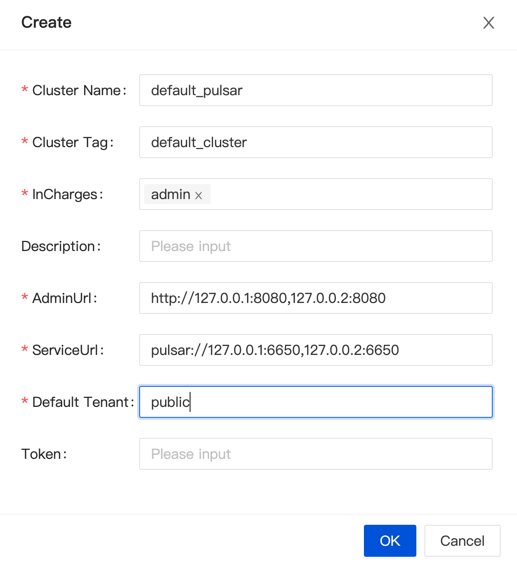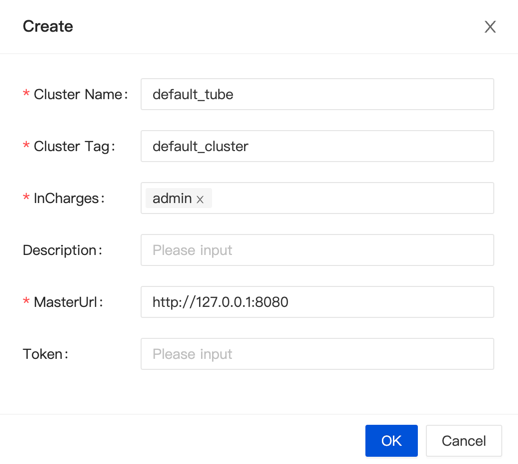Deployment
Environment Requirements
Install and start MySQL 5.7+
initialize database there is
sql/apache_inlong_manager.sqlininlong-managerdirectory, load this file through the following command to complete the initialization of the table structure and basic data# initialize database:
mysql -uDB_USER -pDB_PASSWD < sql/apache_inlong_manager.sql
Add Dependencies
- Download Sort Connector Binary file, and unzip it into
inlong-sort/connectorsdirectory. - If using MySQL database, please download mysql-connector-java-8.0.27.jar and put it in the
lib/directory. - If you use PostgreSQL database, you don't need to download additional dependencies.
Update Configuration
Go to the decompressed inlong-manager directory and modify the conf/application.properties file:
# manager service port number
server.port=8083
# The configuration file used is dev
spring.profiles.active=dev
The dev configuration is specified above, then modify the conf/application-dev.properties file:
If test or prod is specified, modify the corresponding application-xxx.properties file.
spring.datasource.druid.url=jdbc:mysql://127.0.0.1:3306/apache_inlong_manager?useSSL=false&allowPublicKeyRetrieval=true&characterEncoding=UTF-8&nullCatalogMeansCurrent=true&serverTimezone=GMT%2b8
spring.datasource.druid.username=root
spring.datasource.druid.password=inlong
Configure the Flink Plugin
The InLong Manager can start the Sort task, you need to configure the Flink environment first. The configuration file is plugins/flink-sort-plugin.properties.
# Flink host split by coma if more than one host, such as 'host1,host2'
flink.rest.address=127.0.0.1
# Flink port
flink.rest.port=8081
# Flink job manager port
flink.jobmanager.port=6123
# InLong Audit Proxy Address
metrics.audit.proxy.hosts=127.0.0.1:10081
Start Application
bash +x bin/startup.sh
Register MQ Cluster
Pulsar Cluster
If you use Pulsar as the message queue for data cache, you need to add its configuration to InLong-Manager:
Open the Inlong-Dashboard page (the default is http://127.0.0.1), and select to add a Pulsar cluster on the [Clusters] tab:

Click the [Create] button, and fill in the required information such as cluster name, cluster tag, responsible person, AdminUrl, ServiceUrl and default tenant in the pop-up box to save.
Note: [Cluster Tag] is a logical concept. Tags with the same name will be regarded as the same cluster.
For example, the DataProxy cluster and the Pulsar cluster with the same cluster tag belong to the same cluster.
Fill in the example:

TubeMQ Cluster
If you use InLong TubeMQ as the message queue for data cache, you need to add its configuration to InLong-Manager:
Similar to the above entry for adding a Pulsar cluster, the filling example is as follows:

(Optional) Enable OpenAPI Authentication
Enable Authentication
Manager supports the option to authenticate client component access to its open APIs. To enable authentication modify conf/application.properties:
# Manager open api authentication enabled
openapi.auth.enabled=true
Authentication Configuration
Components that access manager must be authenticated by secret id and secret key if enabled, for example (please configure user's own instead of the example) :
Modify agent.properties in agent's conf directory:
agent.manager.auth.secretId=admin
agent.manager.auth.secretKey=87haw3VYTPqK5fK0
Modify common.properties in dataproxy's conf directory:
manager.auth.secretId=admin
manager.auth.secretKey=87haw3VYTPqK5fK0
Authentication Key Generation
Admin user can log in inlong dashboard to allocate secret ids and keys: System->User->Create.